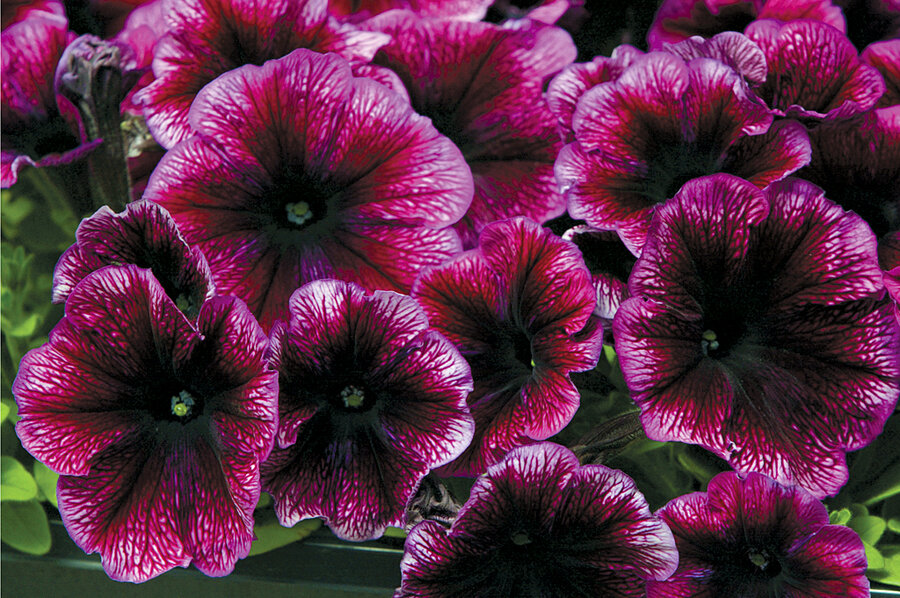Don't overlook the ordinary
Loading...
I'm a fan of the ordinary in the garden, plants that are widely grown because they perform so well. Garden catalogs sing hosannas to obscure species, especially to unheard-of perennials described as having "transparent beauty" or "unusual form and color." In my experience, that often translates as "short-lived," "difficult to grow," and "underwhelming."
Petunias, like marigolds, are among the common flowers that get little respect. Widely adaptable, they are vigorous, self-reliant, and largely pest- and disease-free. They are easy to grow, bloom ceaselessly, and thrive in containers. Add to that their wide availability, their inexpensive price, and their varied forms and colors, and you have the perfect ordinary flower.
While most gardeners treat petunias as annuals, they technically are tender perennials, members of the potato family. Today's hybrids are descendants of two lanky, small-flowered South American species; their seeds were collected nearly 200 years ago and carted to Europe, where German and English breeders crossed them and produced the garden petunia, Petunia x hybrida, with its characteristic five-petal, funnel-shaped flowers.
By 1935 there were double-flowered petunias, thanks primarily to Japanese breeders. Bicolors followed, as did cultivars with larger blooms, a more compact habit, better disease and weather resistance, and new colors, including the first yellow, Summer Sun, released in 1977.
Today there are grandifloras, multifloras, floribundas, millifloras, hedgifloras, supertunias, surfinias, and more. (While technically not petunias, the wildly popular Calibrachoa hybrids, or trailing petunias, look and act like petunias, and are sold under names like Million Bells and Superbells.)
I avoid grandiflora petunias, which are easily damaged by wind and rain, and I don't fancy bicolors – or doubled-flowered types or picotee petunias, which have blooms edged with white and look (to me) like a square-dancer's skirt with its petticoats showing.
I'm not a complete Luddite, however. I'm a fan of Wave petunias, spreading types that don't require deadheading. The first Wave cultivar, Purple Wave, received an All-America Selections award in 1995. I also like multifloras, with their two-inch blooms, and floribunda types, such as those in the Madness series, both of which stand up better to normal garden conditions than the large grandifloras do.
Whichever your choice, petunias need to be in full sun. Less light produces fewer flowers and leggy plants. They require only moderately rich soil but need good drainage; apply an organic liquid fertilizer formulated for flowering plants every couple of weeks to keep the blooms coming.
While good in the garden, petunias are even better in containers set in a protected spot. Potted plants, however, need careful watering – sometimes daily – and feeding. Some older petunia varieties require deadheading, and most types are improved by cutting back the stems by a third in midsummer to encourage new growth.
I'm among those who like petunias' distinctive perfume. The American garden writer Louise Beebe Wilder called them "vespertine flowers," as their scent grows stronger at sundown, the time of vespers. That turns any patio or deck filled with pots of petunias into a floral evensong.
One warning about growing this star of the ordinary: Starting from seeds is a long and tough process. Instead of sowing, wait until the soil warms to about 60 degrees F. and the danger of frost has passed and head for a plant nursery: It will be swarming with petunias.







